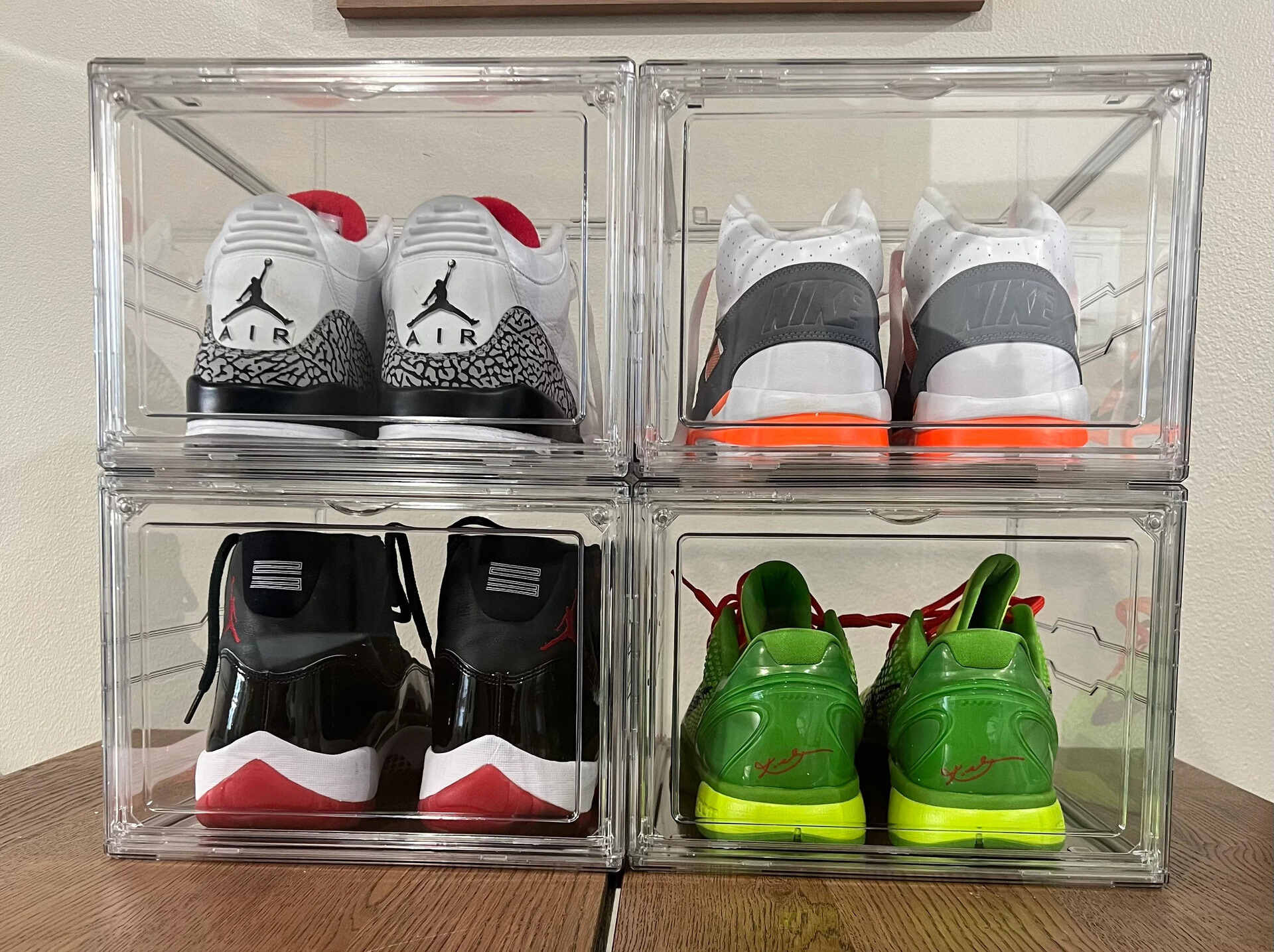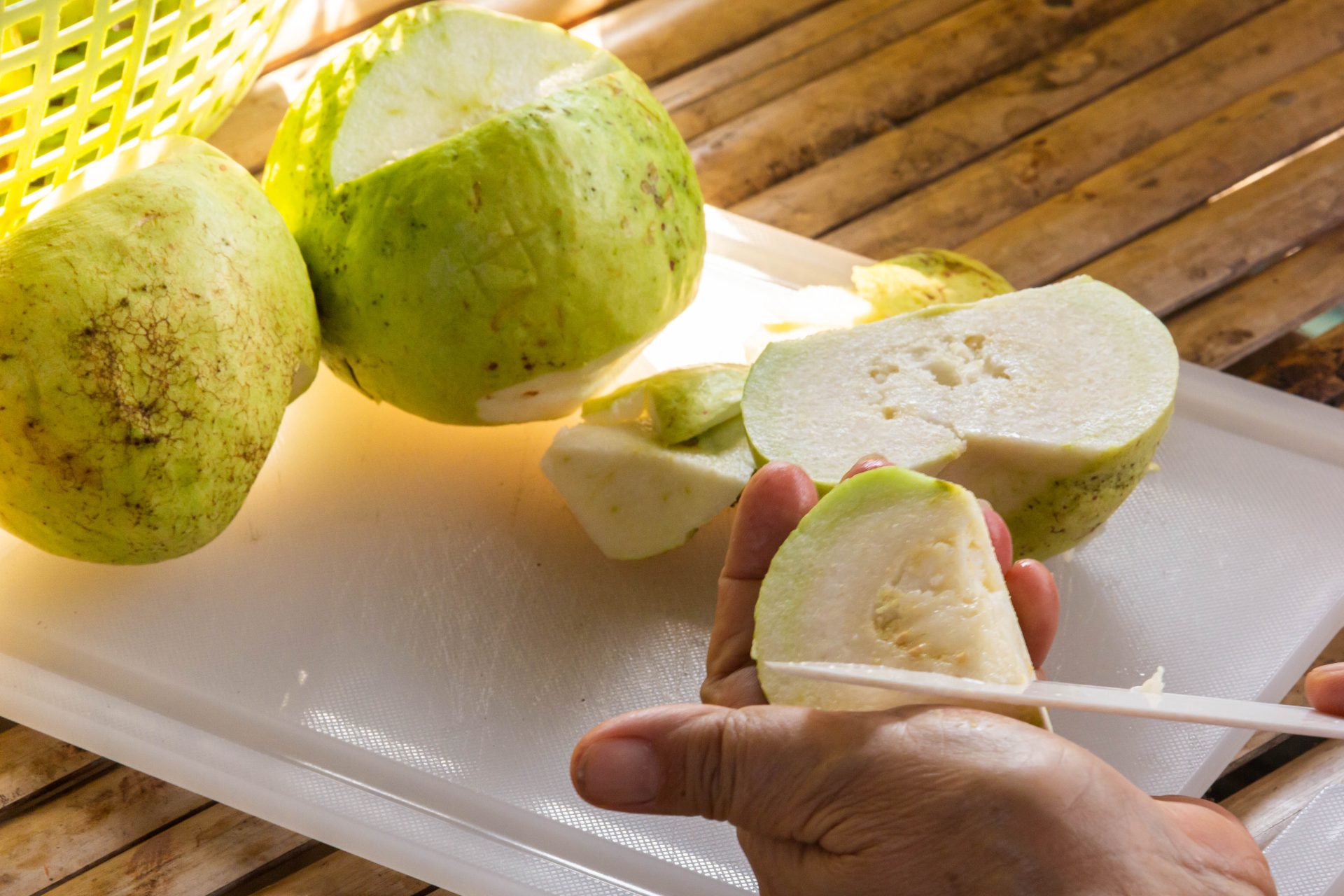

Articles
How To Store Chorizo
Modified: May 6, 2024
Learn how to properly store chorizo with our informative articles. Find tips and tricks for preserving the flavor and freshness of this delicious sausage.
(Many of the links in this article redirect to a specific reviewed product. Your purchase of these products through affiliate links helps to generate commission for Storables.com, at no extra cost. Learn more)
Introduction
Chorizo, a delicious and versatile cured sausage, is a staple in many cuisines around the world. Whether you prefer the spicy kick of Spanish chorizo or the milder flavors of Mexican or Portuguese chorizo, one thing remains the same – proper storage is crucial to maintain its quality and taste.
In this article, we will dive into the world of chorizo storage and explore the best practices to keep your favorite sausage fresh and flavorful. We will discuss the ideal storage temperature, proper refrigeration and freezing techniques, tips for packaging, and even explore the option of storing chorizo in the pantry. So, whether you have a fresh batch of homemade chorizo or want to extend the shelf life of store-bought chorizo, read on to discover expert tips and tricks for proper chorizo storage.
Key Takeaways:
- Proper storage of chorizo is essential to maintain its quality and flavor. Refrigerate fresh and semi-cured chorizo, freeze for extended shelf life, and consider pantry storage for fully dried or cured varieties. Always check for signs of spoilage to ensure safety.
- Choose the right type of chorizo based on flavor preferences and culinary needs. Consider the quality, spiciness level, form, and expiration date when selecting chorizo. Properly stored chorizo can last for varying durations depending on the type and storage method.
Read more: How To Store Chorizo Once Opened
Understanding Chorizo
Before we delve into the intricacies of storing chorizo, let’s take a moment to understand this delectable sausage. Chorizo is a highly seasoned cured sausage that comes in various forms and flavors. It is traditionally made from pork, but you can also find variations made with chicken, beef, or even vegetarian ingredients.
Spanish chorizo is known for its smoky flavor, thanks to the addition of smoked paprika. It can be either dry-cured or semi-cured and is typically seasoned with garlic, salt, and other spices like cumin and oregano.
Mexican chorizo, on the other hand, is made with fresh, raw meat and does not undergo a curing process. It is typically spicier and comes in a loose, ground form. Mexican chorizo is seasoned with a blend of chili peppers, garlic, and other spices, giving it a bold and vibrant flavor profile.
Portuguese chorizo falls somewhere in between Spanish and Mexican chorizo in terms of flavor and preparation. It is often dry-cured and seasoned with similar spices as Spanish chorizo but can also have a milder taste.
Regardless of the type of chorizo you have, it is important to handle and store it properly to preserve its taste and texture. Let’s explore the essential steps to ensure that your chorizo stays fresh and ready for your culinary creations.
Choosing the Right Type of Chorizo
When it comes to choosing chorizo, there are a few factors to consider. First and foremost, determine the type of chorizo you need for your recipe or personal preference. Do you prefer the smoky and cured flavors of Spanish chorizo or the bold and fresh taste of Mexican chorizo? Understanding the specific flavors and characteristics of each type will help you make an informed decision.
Next, consider the quality of the chorizo. Look for products made with high-quality ingredients and without any artificial additives or preservatives. If possible, opt for locally sourced or artisanal chorizo, as they often have superior flavor and quality.
The level of spiciness is another aspect to consider, especially if you have a preference for mild or spicy chorizo. Spanish chorizo often has a milder spice level, while Mexican chorizo tends to be spicier. Read the packaging or ask your butcher for recommendations if you’re unsure about the spiciness level.
Additionally, consider the form of chorizo that will best suit your needs. Some chorizo comes as whole sausages, while others come in ground or sliced forms. Choose the form that is most convenient for your recipes, whether you intend to cook it as a whole, crumble it, or use it as slices for sandwiches.
Finally, pay attention to the expiration date or use-by date on the package. Ensure that you choose chorizo with a reasonable shelf life and consume it before it expires to enjoy the best quality and flavor.
By considering these factors, you can choose the right type of chorizo that suits your taste preferences and culinary needs. Now that you have your desired chorizo, let’s explore the proper storage techniques to ensure its freshness and flavor.
Proper Storage Temperature
One of the critical factors in storing chorizo is maintaining the proper temperature. Chorizo is a perishable food item, and incorrect storage temperatures can lead to spoilage and a loss of flavor.
The ideal storage temperature for chorizo is between 32°F (0°C) and 40°F (4°C). This temperature range allows the sausage to stay safely chilled and extends its shelf life. Refrigerating chorizo at these temperatures slows down the growth of bacteria, ensuring that the sausage remains fresh and safe to consume.
It is important to note that refrigeration is necessary for most types of chorizo, especially if they are fresh or semi-cured. Spanish chorizo and Mexican chorizo typically fall into this category. These types of chorizo should be stored in the refrigerator as soon as possible after purchase or when the packaging is opened.
On the other hand, some types of chorizo, particularly dried or fully cured Spanish chorizo, can be stored at room temperature, away from direct sunlight and excessive heat. These cured sausages have a lower moisture content and higher salt content, which helps inhibit bacterial growth and allows them to be safely stored at room temperature.
Remember that maintaining the correct storage temperature is crucial to preserving the quality and taste of chorizo. Whether you choose to refrigerate or store at room temperature, ensure that you maintain these temperature guidelines for optimal results.
Now that you are aware of the importance of temperature control, let’s move on to the specific storage techniques for refrigerating and freezing chorizo.
Refrigerating Chorizo
Refrigeration is the most common and recommended method for storing chorizo, especially for fresh or semi-cured varieties. Follow these steps to properly refrigerate your chorizo:
- Keep the chorizo in its original packaging if unopened. The packaging is designed to protect and preserve the sausage.
- If the chorizo is already opened, transfer it to an airtight container or wrap it tightly in plastic wrap.
- Label the container or wrap with the date of purchase or when the chorizo was opened. This will help you keep track of its freshness.
- Place the chorizo in the coldest part of your refrigerator, usually the bottom shelf. Make sure it is away from other raw meats to prevent cross-contamination.
- Use the chorizo within the recommended time frame. Fresh chorizo typically stays good for up to a week when refrigerated, while semi-cured chorizo can last for about two weeks.
Remember to always check for any signs of spoilage before consuming refrigerated chorizo. If you notice any unusual smell, discoloration, or sliminess, it’s best to discard it to avoid any potential foodborne illnesses.
If you have purchased a large quantity of chorizo or want to extend its shelf life even further, freezing is a great option. Let’s explore the proper techniques for freezing chorizo in the next section.
Read more: How To Store Basil From Store
Freezing Chorizo
Freezing chorizo is an excellent method for extending its shelf life and ensuring you always have some on hand for your favorite recipes. Here’s how you can freeze chorizo:
- If your chorizo is in its original packaging and unopened, you can freeze it as is. The packaging helps protect the sausage from freezer burn.
- If the chorizo is already opened or not in its original packaging, transfer it to a freezer-safe container or wrap it tightly in plastic wrap. Be sure to remove as much air as possible to prevent freezer burn.
- Label the container or wrap with the date of freezing.
- Place the chorizo in the freezer, ideally in the coldest part or the freezer drawer.
- Frozen chorizo can last for up to three months without significant loss of quality. However, for the best taste, it is recommended to consume it within one to two months.
When you’re ready to use the frozen chorizo, thaw it in the refrigerator overnight. Avoid thawing at room temperature, as this can promote bacterial growth. Once thawed, the chorizo can be refrigerated and used within a few days.
Freezing chorizo is a convenient way to have it readily available whenever you need it. Just remember to follow proper packaging and labeling techniques to ensure its quality remains intact.
Now that you are equipped with the knowledge of refrigerating and freezing chorizo, let’s explore some tips for packaging chorizo for storage.
Store chorizo in the refrigerator in its original packaging or a resealable plastic bag. If it’s a whole sausage, wrap it tightly in plastic wrap or aluminum foil. Use within 1-2 weeks or freeze for longer storage.
Tips for Packaging Chorizo
Proper packaging is essential for keeping chorizo fresh and protected during storage. Follow these tips to ensure your chorizo stays in optimal condition:
- For refrigeration, if the chorizo is in its original packaging and unopened, it is best to leave it as is. The packaging is designed to maintain the sausage’s freshness. However, if the packaging is damaged or open, transfer the chorizo to an airtight container or wrap it tightly in plastic wrap.
- If you are freezing chorizo, use freezer-safe containers or heavy-duty freezer bags. Make sure to remove as much air as possible from the packaging to prevent freezer burn. Alternatively, vacuum-sealed bags work well for extending the shelf life of chorizo in the freezer.
- Label the containers or wraps with the contents and the date of packaging or freezing. This will help you keep track of the chorizo’s freshness and ensure you use it within the recommended time frame.
- Properly sealed and labeled chorizo packages can be stacked in the refrigerator or freezer, maximizing the use of storage space.
- Consider portioning the chorizo before packaging, especially if you frequently use smaller amounts in your recipes. This way, you can thaw and use only the amount you need, preventing unnecessary waste.
By following these packaging tips, you can maintain the quality and freshness of your chorizo for longer periods, whether you are refrigerating or freezing it.
Now, let’s explore the option of storing chorizo in the pantry and when it can be a suitable choice.
Storing Chorizo in the Pantry
While refrigeration and freezing are the most common methods for storing chorizo, there is an option to store certain types of chorizo in the pantry. This method is typically suitable for fully dried or cured chorizo, such as some varieties of Spanish chorizo.
If you have dried or fully cured chorizo, follow these steps to store it in the pantry:
- Keep the chorizo in a cool, dry, and well-ventilated area of your pantry. Choose a spot away from direct sunlight and ensure proper air circulation.
- For whole chorizo sausages, leave them in their packaging or wrap them loosely in a clean cloth or paper bag. This helps protect the sausage from dust and allows it to breathe.
- Alternatively, you can hang the chorizo in a cool area, such as a well-ventilated pantry or a cellar. Use butcher’s twine or a storage net to hang the sausages from a rod or hook.
- Regularly check the chorizo for any signs of mold or spoilage. If you notice any visible mold growth or an off smell, discard the sausage immediately.
- Dried or cured chorizo stored in the pantry can last for several months, but it is recommended to consume it within six months for the best taste.
It’s important to note that not all types of chorizo are suitable for pantry storage. Fresh or semi-cured chorizo that requires refrigeration should always be stored in the fridge or freezer to prevent any risks of contamination.
By properly storing your dried or fully cured chorizo in the pantry, you can enjoy its intense flavors and textures whenever you’re in the mood for a delicious slice of this traditional sausage.
Now that you know how to store chorizo in various ways, let’s explore the shelf life of chorizo and the signs of spoilage to be aware of.
Length of Chorizo Storage
The length of time that chorizo can be stored varies depending on the type of chorizo and the storage method used. Here are some general guidelines:
Refrigerated Chorizo:
Fresh chorizo typically has a shorter shelf life and should be consumed within a week of refrigeration. Semi-cured chorizo can last for about two weeks in the refrigerator. It is crucial to check the packaging for any specific recommendations from the manufacturer.
Frozen Chorizo:
When properly frozen and stored, chorizo can maintain its quality for up to three months. However, for the best taste and texture, it is recommended to consume frozen chorizo within one to two months. Always check the packaging or labeling for any specific instructions regarding freezing and thawing.
Pantry-Stored Chorizo:
Dried or fully cured chorizo that is stored in a cool, dry, and well-ventilated pantry can have an extended shelf life. It can typically last for several months, up to six months or even longer. However, it is essential to regularly check for any signs of mold or spoilage and discard the sausage if there are any concerns.
It’s important to remember that these are general guidelines, and the actual shelf life of chorizo can vary. Factors such as the quality of the sausage, packaging, and storage conditions can affect its longevity.
Now, let’s move on to the signs that indicate chorizo may have spoiled and should be discarded.
Read more: How To Store Store-Bought Bread
Signs of Spoiled Chorizo
As with any food product, chorizo can spoil over time or due to improper storage conditions. It’s important to be able to identify the signs of spoiled chorizo to avoid consuming potentially harmful or unpleasant sausage. Here are some common signs to look out for:
- Unusual Odor: Spoiled chorizo may emit a strong, foul odor that is noticeably different from its usual aroma. If it smells rancid, sour, or off in any way, it’s best to discard it.
- Change in Color: Chorizo that has spoiled may display a significant change in color. It may appear dull, discolored, or have patches of mold on the surface. Any visible signs of mold growth indicate spoilage and should be a clear sign to discard the chorizo.
- Texture Changes: Spoiled chorizo can become slimy or develop a sticky texture. If the sausage feels excessively wet or tacky to the touch, it is an indication that it has gone bad and should not be consumed.
- Off Taste: When chorizo has spoiled, it typically has an unpleasant taste. It may taste sour, bitter, or have an overall off-flavor. Trust your taste buds – if something doesn’t taste right, it’s best to err on the side of caution and discard it.
It is important to note that consuming spoiled chorizo can lead to foodborne illnesses. If you suspect that your chorizo may be spoiled, it is best to discard it to avoid any potential health risks.
Last but not least, let’s recap the key points we have covered in this article about storing chorizo.
Conclusion
Proper storage of chorizo is crucial for maintaining its quality, taste, and safety. Whether you have Spanish chorizo, Mexican chorizo, or any other variety, following the right storage techniques will ensure that you can enjoy this flavorful sausage for as long as possible.
Refrigeration is the most common method for storing chorizo, especially for fresh and semi-cured varieties. Keep it in its original packaging or transfer it to an airtight container when refrigerating. Freezing is another option to extend the shelf life of chorizo, with proper packaging to prevent freezer burn.
For fully dried or cured chorizo, pantry storage can be suitable if kept in a cool, dry, and well-ventilated area. However, it’s crucial to regularly check for any signs of mold or spoilage.
Remember to always adhere to the recommended storage temperatures and durations for optimal results. Pay attention to the quality, expiration dates, and any specific instructions provided by the manufacturer.
Lastly, be aware of the signs of spoiled chorizo, including unusual odor, changes in color or texture, and off-taste. If you notice any of these signs, it’s best to discard the sausage to avoid any potential health risks.
By following these guidelines and best practices, you can ensure that your chorizo stays fresh, flavorful, and safe to consume for as long as possible. So store your chorizo properly and let your culinary creations continue to be infused with the deliciousness of this beloved sausage.
Now that you've mastered storing chorizo, why not expand your preservation skills with other types of meats? Keeping your freezer organized and your meat fresh requires specific techniques. Dive into our detailed guide on freezing various meats to ensure you're maximizing both space and taste. Whether you're dealing with beef, chicken, or fish, understanding the nuances of meat storage will definitely elevate your kitchen game.
Frequently Asked Questions about How To Store Chorizo
Was this page helpful?
At Storables.com, we guarantee accurate and reliable information. Our content, validated by Expert Board Contributors, is crafted following stringent Editorial Policies. We're committed to providing you with well-researched, expert-backed insights for all your informational needs.














0 thoughts on “How To Store Chorizo”